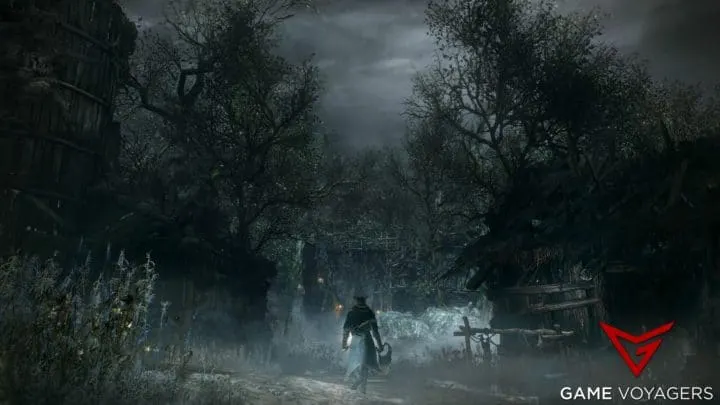From Software’s SoulsBorne formula is in a league of its own and though they all share the basics, there are enough differences in their mix that one could easily tell them apart and love them for their brand of uniqueness. The difficulty is a constant in the formula and it’s woven into each game in a distinct manner.
Many players who are looking from the outside love to get into this genre but the intimidating nature of it can be a barrier thus they would like to know which one of the entries here is more accessible i.e. easier or you could say less hard.
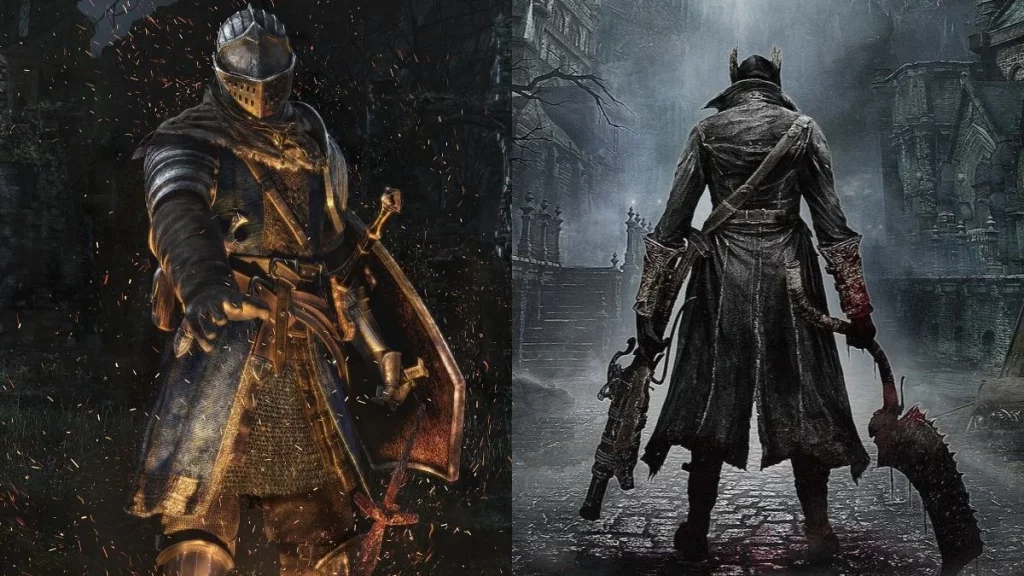
Related: How To Speak With Djura In Bloodborne?
This topic of which is harder is constantly being debated by the community and you can’t really say that either of the series is harder than the other because some parts of the gameplay are easier in Bloodborne and harder in Dark Souls, and vice versa. Even between the three Dark Souls games, huge differences could alter your perception from one to the other. Dark Souls 1 has been deemed as much more methodical and tactical as compared to Dark Souls 3 where Bloodborne’s fast-paced gameplay is more evident in the development.
Gun to the head, if I have to answer this question then I would say Dark Souls is more difficult than Bloodborne. Though this is a subjective topic hence I will be listing the reasons where each entry is comparatively harder than the other and if we were to average these reasons then Dark Souls would be the more challenging.
Reasons
Both these series are a testament to brilliance on From Software’s part and pitting them against each other in any way is kind of blasphemous. But with such a barrier to entry that the difficulty of the game projects, there has to be some sort of answer for the layman gamer to help in the decision of which one to pick up first.
Gameplay Style
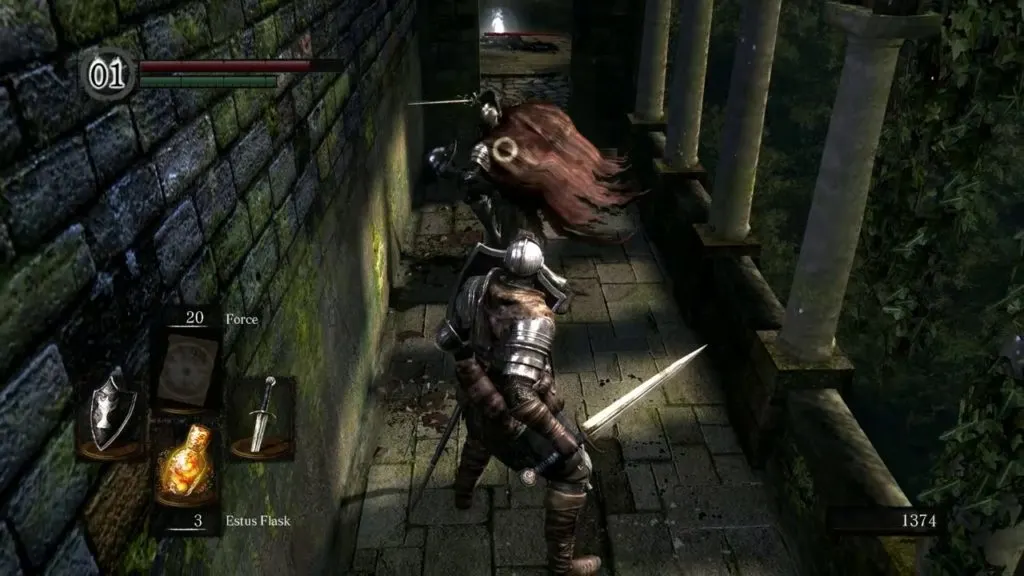
The SoulsBorne gameplay is one where players have to be extra aware of their actions and live with the consequences of them. These games subvert the traditional hack and slash type of action gameplay where you button mash and are generally punished less for mindless actions (played on the normal difficulty that is). Here you have to know what you are doing, attack in the right windows, and defend at the right time. In all these aspects I would say Dark Souls (especially 1) is more inaccessible for beginners.
Related: Ultimate Beginners Guide to Bloodborne
Dark Souls is more meticulous, your actions are heavy and the penalty for a wrong decision is crueler. You need to know what you are doing and when you are doing it. Dark Soul is relatively slow so it will constantly make you think about each action.
Bloodborne is the aggressive and fast-paced spin on this established recipe. It requires you to stay close to the action. Think fast and punch hard and move away quickly. Every aspect of the game requires you to stay on your toes and react quickly. This might sound harder but the hack and slashy feel of the whole package makes it rather easier to get into the flow.
Build Diversity
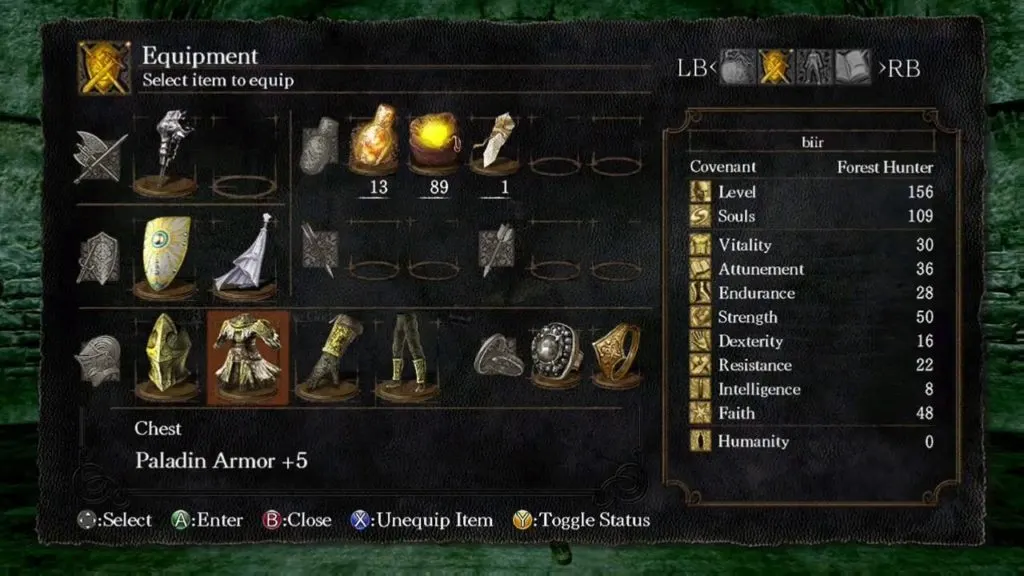
The stats and attributes in all these games are many and an uninitiated player will be overwhelmed looking at them and ends up leveling up each one and losing the synergy that might come from proper build-specific upgrading. If you create a proper build where every part compliments your overall creation then you will be having more fun and dealing more damage.
Related:Are There Difficulties in Dark Souls 3?
Dark Souls has a lot more build variety than Bloodborne. This can be a good thing or bad depending on the player, as more variety means more ways of dispatching enemies while also constantly questioning your build choices. Some Dark Souls have amazing range builds that can help you take out enemies from a distance but these builds are not available at all.
On the other hand, Bloodborne, though has its share of builds, is easier build-wise as it usually revolves around mostly physical close quarter combat and so most of its builds are essentially similar with little to no range alternatives.
Shield vs Gun
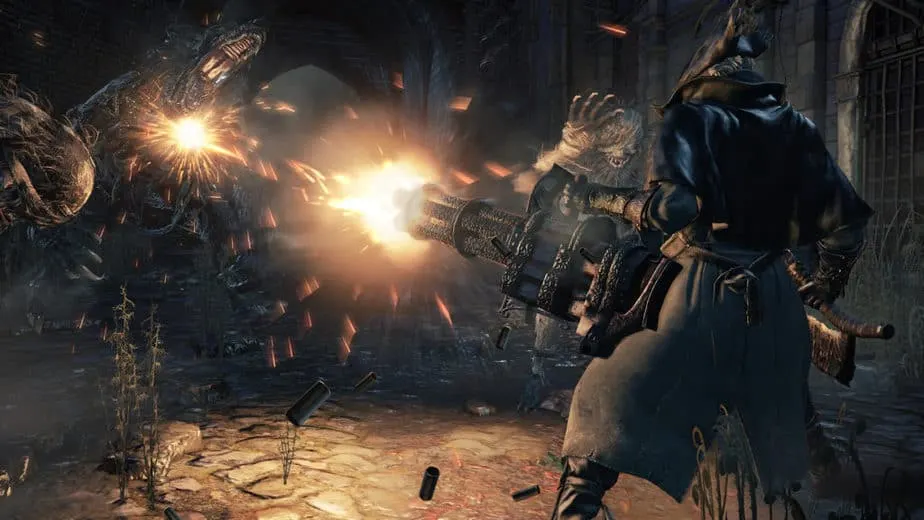
The enemies hit hard in these games and even the lowest of mobs can make quick work of you without you even realizing so defensive measures are an integral part of these games and both these series have a unique take on the mechanic. Both of them have dodges where you could just move out of the way of the incoming attack or create some distance from the enemy.
In Dark Souls you are given shields, you can use them to defend yourself from enemies, and depending on the shield you will only lose stamina in doing so or in the case of weaker shields a small portion of your health. This can allow you to stay close to the enemy and look for windows to attack. You can also parry with these shields by counter-attacking them right before the enemy’s attack connects. This staggers the enemy and you can go in for a critical attack.
Related: Is Elden Ring In The Dark Souls Universe? Explained
This shield is replaced by a firearm in Bloodborne where there is no defensive measure of blocking attacks but if you fire them at the right moment then these are the perfect parry tools. In this game’s case, you can fire the weapon just as the enemy’s attack animation began, giving you a rather bigger window to parry than the shield. There are canons and miniguns too but those are more damage-dealing rather than defensive instruments.
Both of these methods have their benefits, the shield provides constant blocking but it is difficult to pull off parries while the gun has more parrying potential but there is no blocking and relies on dodging for alternate defense. If you ask me then shields are rather easier to understand.
Equipment Load

On top of the stats mentioned above, you also have to be aware of the equipment load in Dark Souls only. Heavy weaponry and armor require you to invest in more equipment load to carry them while nimble builds don’t need it that much. If you reach certain higher percentage thresholds in your equipment load then you will start slow-rolling and dodging will become less responsive. You can counter this by carrying heavier shields but dodging will be a lesser-used option. You can also use precious ring slots to increase equipment load to get the quick-rolling back but it’s rather wasteful and one should commit to the tanky build their equipment demands.
Related: Bloodborne Ultimate Weapons Guide
This whole equipment load mechanic aspect is not present in Bloodborne, you just need to have the necessary stats to carry anything you want. This means that there are lesser barriers to using the various gear you encounter and you are always rolling at the same speed throughout. This feels rather easier as you don’t have to micromanage your equipment.
Health
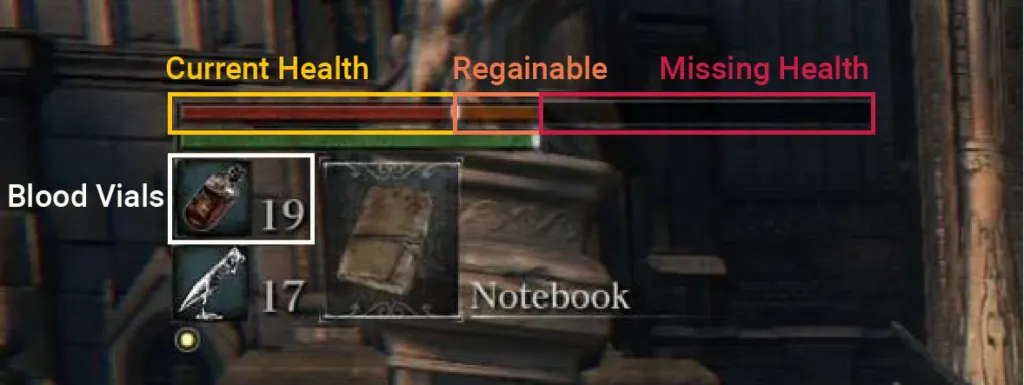
The health bar in Dark Souls acts just like any of the other games, though the enemies hit hard, you lose it with each hit and can recover it using health supplies i.e. Estus Flasks, easy peasy no complicated matter here.
However Bloodborne has a unique feature called Rally where you could regain the health you just lost within 5 seconds from the recent enemy hits if you start hitting the enemy back. The health gained back depends on the damage you deal. This aspect encourages the player to stay close to the enemy and not run away and heal. If you can use and time it right then there will be no need to consume any health supplies and one could easily recover their HP if they are willing to show some aggression.
Of the two systems, the Bloodborne Rally is more friendly. But one could argue that it’s more difficult as you have to stay close to the enemy.
Related: Ranking the Bloodborne Bosses by Difficulty
Health Supplies
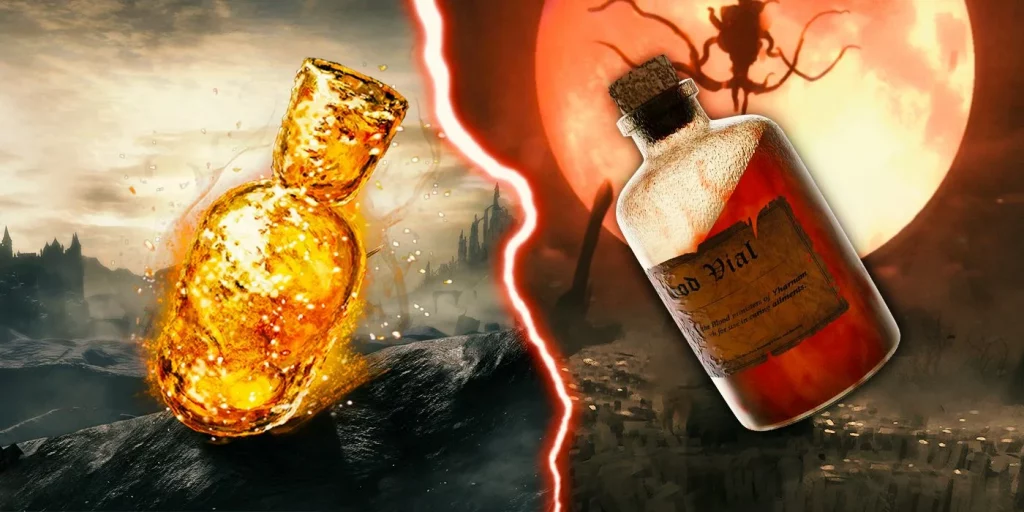
Staying on the topic of health, both these games have very different approaches to recovering it. Apart from the Rally system in Bloodborne, the primary method of healing is by using the Blood Vials which you carry 20 at a time and you can easily get them back from dead enemy drops. You can use them quickly mid-battle so that’s a plus as well. The only drawback is if you run out of them, even the ones stored in your inventory, then you are down on your luck and will have to resort to farming them from enemies. But if you have gathered ample supplies then you won’t have to face this issue.
Dark Souls has its renowned Estus Flask method which you start with a few at the beginning of the game and will eventually find more throughout the game, these are somewhat of a collectible in the game so they are few and far between and depends on your exploration. But once you have them you can refill them by resting at a Bonfire. This method takes away the fear of running out of healing supplies like Blood Vials but they are limited use only until you reach the next bonfire.
Bloodborne’s massive Blood Vial count that you can carry and the fact that you can find it just by defeating the basic enemies is more accessible than the limited Estus Flask.
Related: The Best Starting Class and Burial Gift In Dark Souls Remastered
Stamina
Below the health is the stamina bar in green and this is the most used bar of them all. It is used to execute any action like attacks and dodging/blocking in the game even when you are hit while blocking with a shield you lose stamina. Losing all of your stamina in the middle of the battle will leave you open to punishment and you are always managing this bar and strategizing when to attack and when to defend.
The stamina recovery in Dark Souls (minus Dark Souls 3) is slower thus more thought needs to be given to each action. While stamina regenerates much faster in Bloodborne to keep the flow of the action going and for this reason, Bloodborne is easier.
Chalice Dungeons
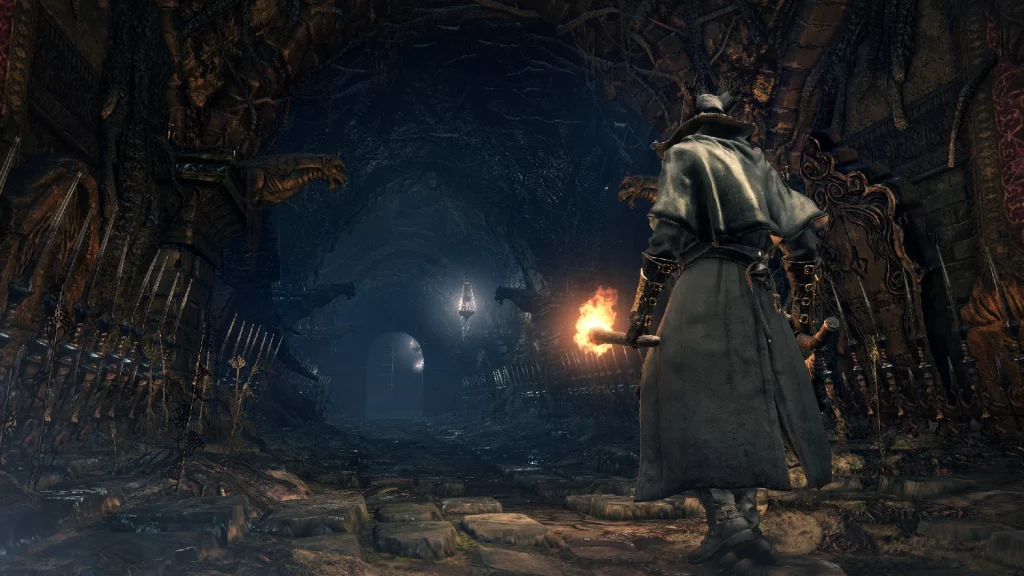
These are unique optional levels that are only present in Bloodborne. They are dungeons that can either be procedurally generated or are specifically built. Players who have gone for the Yharnam Stone and Beast Claw hunt will have to go through these in a particular order. The starting dungeons are normal but the latter ones are insanely hard. Though you can skip it completionists have to go through these and they are quite a challenge. They house some crazy enemies, traps, and bosses. And some dungeons even take away half of your health.
Related: Dark Souls 3 Infusion Guide
Your first SoulsBorne
Dark Souls always had a dedicated cult type following from the beginning and the only thing known about it to the general audience was its difficulty owing to the “You Died” memes.
Bloodborne on the other hand was the first souls-like game for most people, me included. And the success of the PS4 helped it reach many households.
There is sort of a fact in the community for these games that your first SoulsBorne game is your favorite and potentially the most difficult as it is your first time experiencing this type of gameplay.
Summing up from the many reasons given above Dark Souls in my opinion feels like a game where more homework on part of the player is required and better tactical prowess. Bloodborne demands aggression but the overall experience is rather friendly, considering the friend wants to kill you that is.

